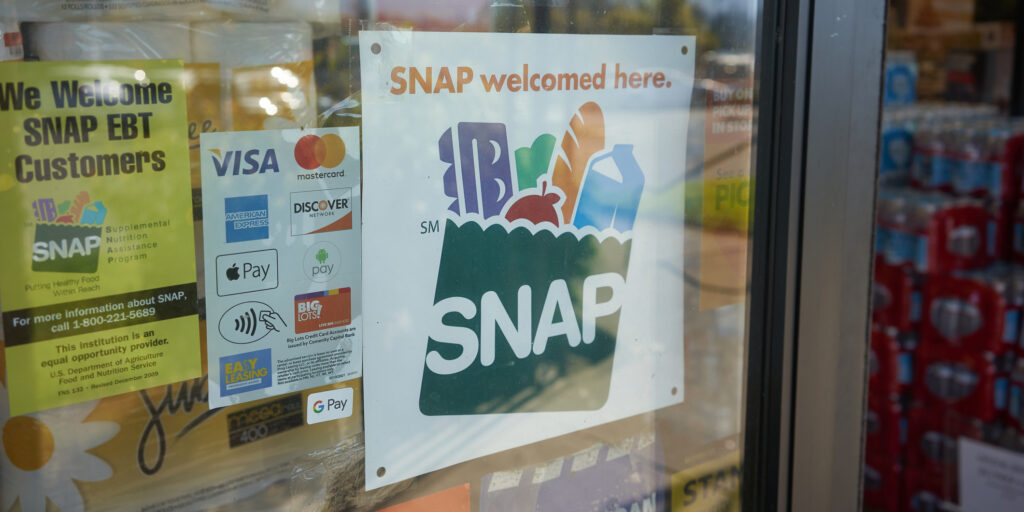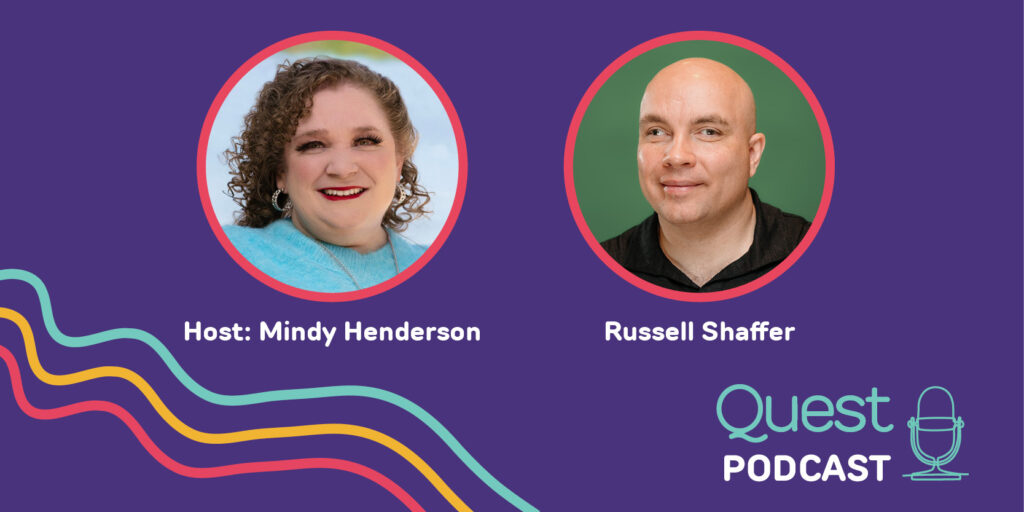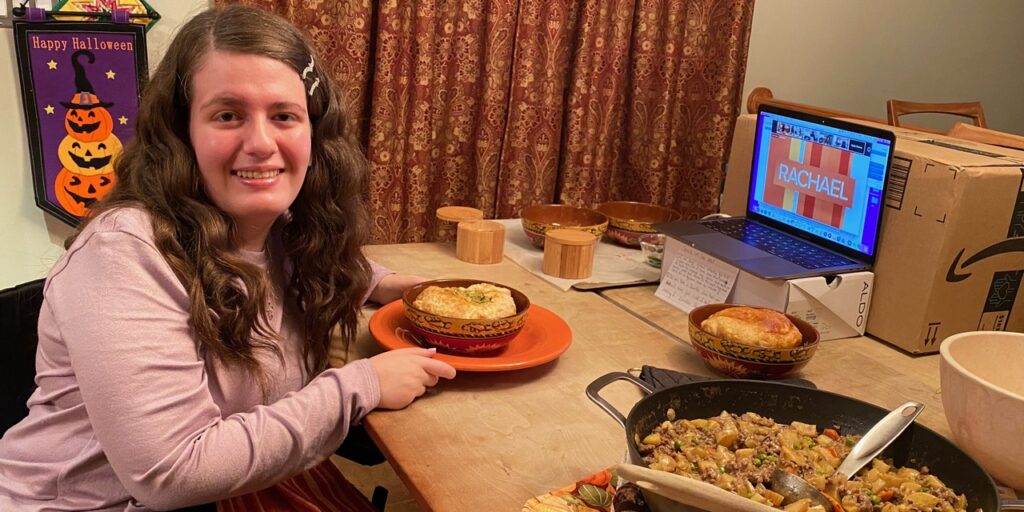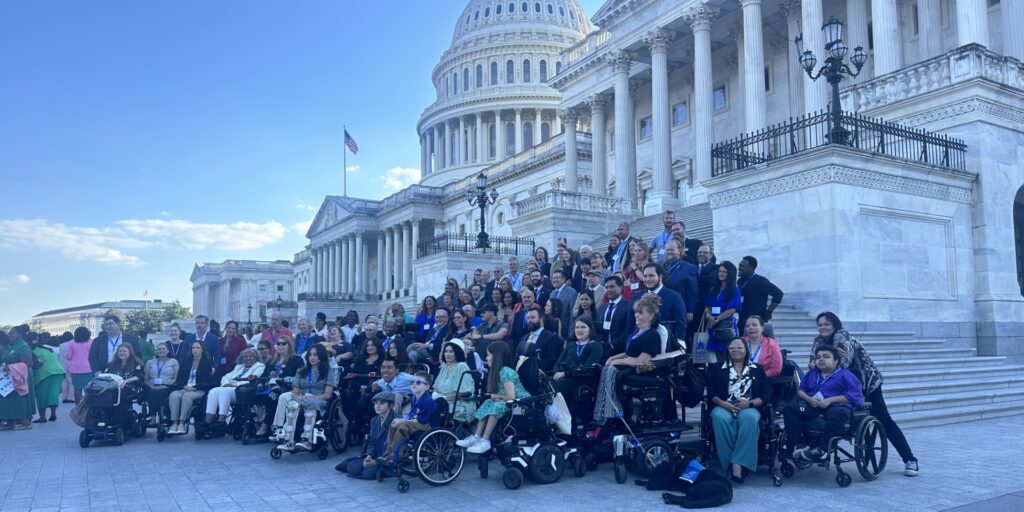
What to Know About Changes to Food Assistance through SNAP
By Shannon Wood | Monday, October 27, 2025
Funding for the Supplemental Nutrition Assistance Program, which provides food assistance to more than 42 million children and adults across the country – including 4 million people with disabilities – will run out in November as a result of the federal government shutdown. Unless the administration takes emergency measures, like it did with the Special Supplemental Nutrition Program for Women, Infants, and Children (WIC) earlier this fall, many families affected by neuromuscular diseases who receive food assistance may see a reduction or pause in their benefits.
The impacts of the government shutdown come on top of historic cuts to SNAP included in the reconciliation legislation passed by Congress earlier this year, which may lead to some families seeing their benefits ended or significantly cut at their next eligibility recertification (typically every 6 or 12 months, although it varies by state).
Below is an overview of what SNAP is; changes to SNAP as a result of the government shutdown; changes to SNAP as a result of the reconciliation bill; and what families affected by neuromuscular diseases can do to prepare for these changes.
What is SNAP?
SNAP provides critical food assistance to children and adults with disabilities and low-income families. SNAP has special eligibility rules for people with disabilities, regardless of age. Under SNAP rules, you are considered to have a disability if you meet any one of the following criteria:
- You receive federal disability payments including Supplemental Security Income (SSI) or Social Security Disability Insurance (SSDI)
- You receive state disability or blindness payments based on SSI rules.
- You receive a disability retirement benefit from a governmental agency because of a permanent disability.
- You receive an annuity under the Railroad Retirement Act and are eligible for Medicare or are considered disabled under SSI.
- You are a veteran with total disability, are permanently homebound, or need regular aid and assistance
- You are the surviving spouse or child of a veteran who is receiving benefits and is considered to have a permanent disability.
If you have a disability and want to apply for SNAP, your household must meet the following two conditions: your net monthly income must be equal to or below 100% of the federal poverty line and your countable assets must be $4,500 or less. If you live alone, this means your net income monthly income must be $1,225 or less. For a two-person household, it’s $1,704. If you live in a household where every member receives SSI benefits, you may ‘categorically’ qualify for SNAP without having to meet the net income test.
How does SNAP work?
Once enrolled, recipients receive an average payment of $187 per month on prepaid cards they can use to buy household food staples like produce, meat, and dairy. SNAP is federally funded through the US Department of Agriculture (USDA) with states administering benefits. In order to get benefits to recipients on the first of the month, states must send electronic files with SNAP recipient information monthly to an electronic benefit transfer (EBT) vendor to process the data and load benefits onto cards. Benefits are issued monthly and last for a full calendar year, meaning any leftover money in one month can be used in the next.
How is the government shutdown impacting SNAP benefits?
The US Department of Agriculture sent a memo to states this month stating if the current lapse in government funding continues, there will be insufficient funds to pay out full benefits in November. The Department instructed states to hold on sending their November files to EBT card processors in late October ‘until further notice’.
A number of states – reportedly, half – have announced they’ll begin pausing or winding down SNAP benefits due to the government shutdown, including: California, Connecticut, Texas, Alaska, New York, Pennsylvania, Washington State, Arizona, Colorado, Arkansas, Indiana, Mississippi, New Hampshire and New Jersey.
What changes did the budget bill (One Big Beautiful Bill Act) make to SNAP?
The 2025 reconciliation legislation made the largest cut to SNAP in the program’s history (20%) and made several policy changes to the program. One such change was that it shifted costs to states based on their SNAP benefit payment error rate, requiring states to contribute more towards SNAP. Based on FY2024 data analyzed by the Food Research and Action Center, 43 states would face new financial liabilities under this provision, worsening service disruptions and fiscal impacts to states. In addition, the bill cut the federal match for administrative costs, reducing it from 50% to 25% beginning October 1, 2026, leading to additional costs to states. Another change under the law is the immediate expansion of time limits, or work requirements, with states now required to enforce stricter rules on SNAP recipients ages 18-64 and greater restrictions on noncitizen eligibility. For some, the changes began 9/1/2025, and for others, they will begin 11/1/2025.
How can families affected by neuromuscular diseases prepare for these changes?
Be sure to keep your contact information up-to-date with your state agency and the US Postal Service to ensure you receive timely information about your benefits. Be on the lookout for communications from your state agency about new work requirements. Know that if you have a disability, you may qualify for an exemption. If you see a reduction or end to your benefits, contact the MDA Resource Center for support in locating other forms of assistance. While food banks and pantries cannot replace SNAP (SNAP provides nine meals to every one provided by a food bank), the MDA Resource Center can help you locate forms of food assistance near you. In addition, Hunger Free America operates the National Hunger Hotline, which can connect individuals and families with emergency food providers in their community and other social services (1-866-3-HUNGRY).
Next Steps and Useful Resources
- If you see a reduction or end to your benefits, contact the MDA Resource Center for support in locating other forms of assistance. Contact the MDA Resource Center at 1-833-ASK-MDA1 or ResourceCenter@mdausa.org
- Hunger Free America operates the National Hunger Hotline, which can connect individuals and families with emergency food providers in their community and other social services (1-866-3-HUNGRY).
- Stay up to date on Quest content! Subscribe to Quest Magazine and Newsletter.
TAGS: Caregiving, Community, Mental Health, Nutrition
TYPE: Blog Post
Disclaimer: No content on this site should ever be used as a substitute for direct medical advice from your doctor or other qualified clinician.




